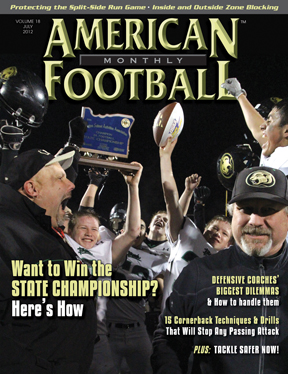Article CategoriesAFM Magazine
|
Complete Cornerback Coverage Techniquesby: Patrick DaberkowDefensive Coordinator Concordia University (NE) © More from this issue The proper technique for backpedaling is a key to maximizing a cornerback’s coverage. As with any technique in football, there are a number of ways that standard defensive back techniques can be taught. The core fundamentals of backpedal, break, and bail are often articulated in very different ways. While it is important to put some of your best athletes at the cornerback position, there are always times when you will need to adapt your personnel and teach a corner how to play the position, possibly for the first time. By coaching plant-gather-go, and tilt-point-drive, you can help players understand the footwork of corner play and maximize their ability to perform.
|
|
|||||||
| HOME |
MAGAZINE |
SUBSCRIBE | ONLINE COLUMNISTS | COACHING VIDEOS |
Copyright 2025, AmericanFootballMonthly.com
All Rights Reserved





